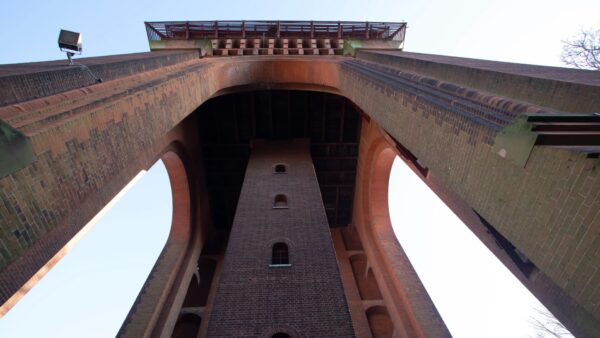An Atkins-Jacobs JV will lead trials this summer of new technology to enable the development of self-monitoring and self-maintaining bridges. Technologies likely to be tested include AI and machine learning.
The National Highways research project, known as Structures Moonshot, addresses the corrosion of steel elements, often encased in concrete. National Highways says such corrosion is one of the greatest threats to bridges and structures on its network.
Structures Moonshot focuses on two specific features:
- the steel tendons in post-tensioned structures; and
- reinforcement within concrete half-joints – a ‘shelf’ constructed at the end of one span to support the adjacent span.
These features can be vulnerable to deterioration, but are difficult to access and often require intrusive investigations to assess the condition. This can require lane or road closures causing disruption for motorists.
National Highways wants to find solutions that can detect defects sooner and resolve the issues in a less disruptive and non-destructive way. This could help the agency towards its ambition of self-monitoring and self-maintaining bridges.
An Atkins-Jacobs JV is leading the project. It will carry out extensive testing and research to identify the most suitable technologies for conducting advanced forms of non-destructive testing (NDT) on structures.
New ideas are being sought that may include experimenting with machine learning and AI to detect critical hidden structural defects. Solutions could range from advanced sensors, imaging technologies and machine learning algorithms.
Real-world testing
Successful entrants will have the rare opportunity to carry out real-world testing of their innovation on sample bridge sections taken from the decommissioned A14 Huntingdon Railway Viaduct. The results will also be published to enable collaboration and shared learning across the construction industry.
Colin George, National Highways deputy head of structures and project sponsor for Moonshot, said: “Robust maintenance and inspection regimes are in place for all of our structures, but if we could find new ways of detecting defects sooner, it will revolutionise our bridge maintenance, safety and efficiency.
“The underlying ambition of Moonshot is to maximise the benefits of recent and rapid advances in technology, tackling the increasing challenge of managing and maintaining the safety and use of our ageing bridge stock. The aim is to reduce the number of unplanned interventions on our roads network – which will mean a better experience for road users – and ultimately to see the automation of activities traditionally undertaken by personnel on site such as inspections and monitoring.
“We want to identify the best technology that is already available on the market and try out pioneering new ideas – things we might not have even thought of yet.”
Chris Mundell, technical director within transportation at Atkins, added: “The project marks a significant enhancement in the sector’s approach to asset management and has the potential to reduce costs, improve safety and sustainability and avoid unplanned road and bridge closures.”
Organisations interested in trialling emerging technology and innovations should visit the competition page by 31 July. Testing will take place in August. For more information, contact [email protected].
Don’t miss out on BIM and digital construction news: sign up to receive the BIMplus newsletter.










